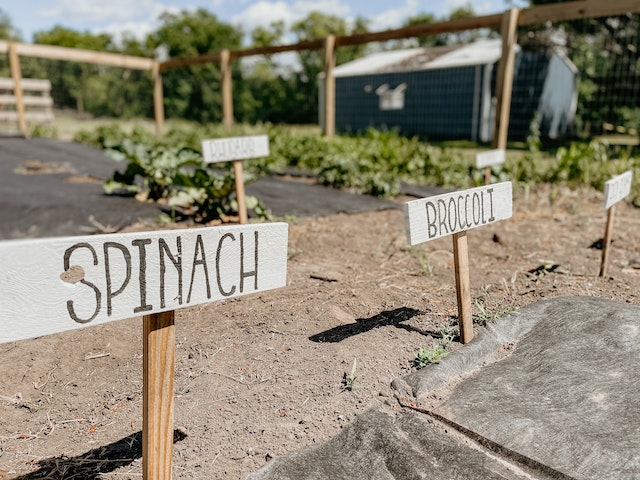Become biodynamic to bring your garden into harmony with the environment

Searching for "biodynamic agriculture" online can lead you down a rabbit hole of publications explaining the supposed advantages of planting according to the moon cycle and burying a cow horn full of manure. Nevertheless, a closer examination of this over a century-old agricultural method shows a set of techniques that potentially revolutionize home gardening. It's not necessary to bury the horn, so don't worry.
According to Maggie Hyde, co-owner of Wisconsin's Petal Back Farm, which uses biodynamic methods to raise its floral crops, it's half methodology, part philosophy. You should see the biodynamic garden as an organism. The goal is to build a varied ecosystem that is resilient and to replenish the ecosystem more than you use.
The advantages for the gardener are also emphasized by the practice's proponents. According to Joseph Brinkley, director of regenerative farming at the Bonterra Organic Estates vineyard in Hopland, California, which uses biodynamic techniques, the nutrient density of the food is raised, the tastes are usually better, and the shelf life of the products will be prolonged.
This all-encompassing strategy has its origins in lectures given in the early 20th century by Rudolf Steiner, an esoteric spiritualist and philosopher best known for developing the Waldorf educational paradigm. Commercial farmers in the United States must be certified by Demeter USA in order to label and sell their goods as biodynamic, but home gardeners don't require any kind of certification in order to start implementing Steiner's teachings.
Here are eight methods for changing your garden into one that adheres to biodynamic principles and practices, along with a few useful advice pieces that are often praised by conscientious gardeners.
Alter your perspective
According to Molly Chester, co-founder of the Californian farm Apricot Lane Farms, which has received biodynamic certification, being biodynamic is a lens you see through. You cease doing a lot of things first. You will stop yourself if your first thought is to employ chemicals to remedy the issue. Stop immediately if getting rid of a bug is your initial instinct. Instead, see an issue as a sign of an unbalance in the garden, whether it be insects, animals, illness, or poor plant health, and then figure out a natural solution. A slug infestation, for instance, can be viewed as a farm organism imbalance rather than a pesticide-required problem, so the gardener might import a natural predator, like ducks, to cope with the problem.

Test the soil
Testing the soil to identify its strengths and weaknesses is the first step in growing a successful garden, whether it is biodynamic or not. To find out where they are available in your area, Hyde advises googling "soil test" and the name of the county in which you reside. In most cases, you will need to collect numerous soil samples from your planting location and send them to a lab through mail or drop them off there. Findings typically show soil pH, levels of the important macronutrients (nitrogen, phosphorus, and potassium), as well as secondary and micronutrient levels (such as calcium, magnesium, zinc and iron). Hyde advises, "You’re looking to create balance, so you need to know what you’re working with."

Nourish the land
Biodynamic farmers use nine specially formulated preparations known as BD 500 to 508 to boost nitrogen levels in the soil and promote growth. Yarrow, chamomile, stinging nettle, oak bark, dandelion, and valerian are among medicinal herbs which are mixed with the six compost preparations that are combined with the topsoil after resting in the compost for predetermined amounts of time. Once the plants have begun to develop, three further special spray formulations are used. The Josephine Porter Institute for Applied Biodynamics and other suppliers provide kits to manufacture these preparations. Use organic compost and plant foods in their place if you are unable to get these preparations. But, Brinkley advises against letting the notion "If I can't do it correctly, I'm not going to do it" deter you from taking action. Just begin.
Accept the diversity of seeds
Plant biodynamic seeds, which may be found at certain nurseries, online, and through other sources. Turtle Tree Seed is a firm that sells biodynamic seeds that have received the Demeter certification. Use organic seeds from a nearby vendor or online merchant, like Fedco Seeds or Peaceful Valley Farm & Garden Supplies, if that isn't possible. Hyde advises basing your garden's initial design on the foods you enjoy eating while constantly keeping diversity in mind. If you like salads, grow a few different leafy greens, a few different tomato kinds, and a few different cucumber varieties. Plant a variety of additional fruits, veggies, and herbs in the available area.
Look to the skies for direction
The concept is to plant in accordance with the moon, sun, stars, and cosmos, according to Hyde. You may work in harmony with the earth's rhythm that way. Get a copy of Stella Natura's yearly biodynamic planting calendar, which provides information on when to plant seeds, prune plants, and harvest crops.
Add cow horn
A cow horn filled with cow manure may be buried before winter arrives to produce superior compost that will power your plants come spring. Get it in the spring, combine the fertilizer with water in accordance with Demeter's instructions, and then spray the resulting concoction over the land. This stage can be skipped if you don't have access to a horn and manure.

Attract beneficial bugs and pollinators
Planting flowers in your yard will entice pollinators to come. Some also have the added advantage of softly scaring away pests. When planted near tomatoes, marigolds deter whiteflies, thrips, and hornworms, while geraniums help deter cabbage worms, maize earworms, and Japanese beetles. Hyde advises introducing beneficial insects like ladybugs and green lacewings, which consume a lot of bothersome pests, to further defend your garden.
Rotate crops
A large yield one year may persuade you to constantly grow the same plants in the same location in the garden. Avoid the need to be constant since each plant uses certain nutrients from the soil while reintroducing others. Always rotate the locations where each crop is planted since over time this leads to an imbalance that has a detrimental effect on growth and bountifulness. According to Hyde, this also lowers the pressure from illness and pests.
































